Scientists from Chulalongkorn University, Bangkok and the Natural History Museum, London recently discovered three new species of carnivorous snails in northern Thailand. However, the celebration of these discoveries is tainted by the fact that the new snails are already threatened with extinction due to the destruction of their limestone habitat.
The new snail species named Perrottetia aquilonaria, P. dermapyrrhosa and P. phuphamanesis were collected during surveys throughout Thailand between 2008 and 2012 and are described in the open access journal Zookeys. Identified by their genital organs and shell characteristics, these are the first snails in their genus Perrottetia to be described in over a century.
The snails belong to the family Streptaxidae which is a terrestrial carnivorous group of snails known to feed on insect larvae, earthworms, and even other snails. These tiny snails less than 1 centimeter in size are found living within rock crevices, endemic to a single or few limestone mountain ranges in north and north-eastern Thailand, adopting a “one hill one species” endemism.
Members of the Streptaxidae family can be recognized by their cylindrical shells, bright yellow to red or orange colored bodies and external hook-like structures on their penis. Close anatomical examination of these snails during the study identified them as new species.
Differences in there anatomy is noted in the journal. For Example, “P. aquilonaria has a club shaped distal penis and large penial hooks are present and penial papillae cover almost the entire penial hook portion.” Whilst P. dermapyrrhosa is described as having “a long genital atrium and the penial sheath is about two thirds of the penis length. Penial hook are long, scattered and sunken into deep ovate hollows; vaginal hook are present.” Meanwhile, P. phuphamanensis is described as having “rounded and protruded shell periphery”.
The discovery of these snails, surviving in such harsh conditions, shows us that “there are still remnants of some fundamental ecosystem” in these overly exploited areas, according to the paper.
“The three new Perrottetia species exhibit distinct morphological characteristics, which make for a great example for evolutionary studies in unstable environments,” explains co-author Somsak Panha in a press release.
Somsak also points out “More than 50% of limestone ecosystems in this region have been or still are being destroyed. This astonishing case of biodiversity persistence gives a valuable reason to put effort in the conservation of this important world ecosystem. ”
These new species are immediately faced with the threat of extinction unless something can be done to protect their rapidly vanishing ecosystem.

The beautiful bright orange-colored Perrottetia dermapyrrhosa, one of the newly described species from Thailand. Photo by: Somsak Panha.

Perrottetia aquilonaria, one of the newly described species. Photo by: Somsak Panha.

A limestone hill being quarried. Under its rocks, there are still many living animals, including carnivorous snails struggling for survival. Photo by: Somsak Panha.
CITATION: Siriboon T, Sutcharit C, Naggs F, Panha S (2013) Three new species of the carnivorous snail genus Perrottetia Kobelt, 1905 from Thailand (Pulmonata, Streptaxidae). ZooKeys 287: 41-57.
Related articles
Pictures: Top 10 new species of 2012
(05/23/2013) A glow-in-the-dark cockroach, an insect described from a photo posted on Flickr, a monkey that has been likened to Jesus, a carnivorous sea sponge, and the world’s tiniest frog are among the ‘top 10’ species discovered during 2012, according to global committee of taxonomists.
New prehistoric animal named after Johnny Depp due to its ‘scissorhands’
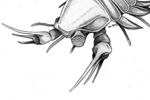
(05/19/2013) Half a billion years after an arthropod with long triple claws roamed the shallow Cambrian seas, scientists have named it after Hollywood movie actor, Johnny Depp: Kooteninchela deppi. Depp, known for his versatility as an actor, played Edward Scissorhands—an artificial man with long scissors for hands—in a popular 1990 film.
Scientists discover new giant mole rat in Africa (photos)
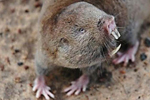
(04/30/2013) Although the term “giant mole rat” may not immediately inspire love, the mole rats of Africa are a fascinating bunch. They spend practically their entire lives underground building elaborate tunnel systems and feeding on plant stems. This underground lifestyle has led them to evolve small ears, tiny eyes, forward-pointing teeth for digging, and nostrils they can shut at will while digging. Some species are quite social, such as the most famous, the naked mole rat (Heterocephalus glaber), while others live largely solitary lives. If that’s not enough, the family of mole rats, dubbed Blesmols, may even help us find a cure for cancer.

(04/22/2013) The misty mountains of the Western Ghats seem to unravel new secrets the more you explore it. Researchers have discovered two new frog genera, possibly restricted to rare and threatened freshwater swamps in the southern Western Ghats of India. The discoveries, described in the open-access journal Zootaxa, prove once again the importance of the mountain range as a biodiversity hotspot.
New insect discovered in Brazil, only third known in its bizarre family (photos)

(04/15/2013) A new species of forcepfly named Austromerope brasiliensis, was recently discovered in Brazil and described in the open access journal Zoo Keys. This is the first discovery of forcepfly in the Neotropics and only the third known worldwide. The forcepfly, often called the earwigfly because the male genital forceps closely resemble the cerci of the common earwig, remains a scientific enigma due to the lack of information on the family.
New species tree-dwelling porcupine discovered in critically threatened Brazilian habitat
(04/11/2013) Scientists in Brazil have described a new species of tree-dwelling porcupine in the country’s most endangered ecosystems. The description is published in last week’s issue of Zootaxa.
Beautiful striped bat is the “find of a lifetime” (photos)

(04/10/2013) Scientists have uncovered a rare, brilliantly-striped bat in South Sudan that has yielded new secrets after close study. Working in Bangangai Game Reserve during July of last year, biologist DeeAnn Redeer and conservationist Adrian Garsdie with Fauna & Flora International (FFI) came across an unmissable bat, which has been dubbed by various media outlets as the “badger bat” and the “panda bat.”
Looking beyond the hundred legs: finding new centipedes in India requires many tools
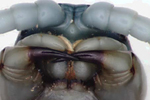
(04/08/2013) A small, boneless creature, that lives underground, with a “hundred” legs, and a rather powerful sting; some of these creatures are drab, but some are so beautiful and brightly colored that they can startle. Centipedes. There is more to a centipede than its many legs, and its habit of darting out of dark places. One of the first lifeforms to turn up on land, some centipede fossils date back to about 450 million years ago. They have been evolving steadily since, with some estimates showing about 8,000 species today. Not even half of these species have been taxonomically described.
New giant tarantula that’s taken media by storm likely Critically Endangered (photos)
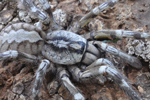
(04/04/2013) Described by a number of media outlets as “the size of your face” a new tree-dwelling tarantula discovered in Sri Lanka has awed arachnophiliacs and terrified arachnophobes alike. But the new species, named Raja’s tiger spider (Poecilotheria rajaei), is likely Critically Endangered according to the scientist that discovered it in northern Sri Lanka.
Scientists discover new wasp species in a field box from the 1930s (photos)
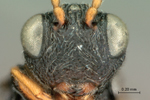
(04/03/2013) Searching through materials at the Natural History Museum in Paris, Simon van Noort recently came across a long-neglected field box of wasp specimens. Collected 80 years earlier by André Seyrig in Madagascar, the box contained several specimens of wasp in the Paramblynotus genus. The big surprise: wasps in this genus had never before been seen in Madagascar.
Scientists describe new species of see-through fish from the Amazon
(04/03/2013) Scientists have documented an entirely new genus of fish from the Amazon rainforest.